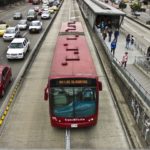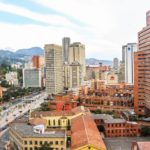Search Results
One city in India is swapping its cars for bikes. WRI India and Nagarro Software, in partnership with Udaan NGO and NASSCOM Foundation, recently launched the Seeds for Change project in Gurugram, India, reclaiming four car parking spots to make ...

In 2016, Barcelona launched superblocks, an innovative strategy to combat air pollution caused by vehicle traffic in the city. The sustainable tactic was detailed in Barcelona’s Mobility Plan, which aims to reduce traffic by 21 percent. Additionally, it says that ...

A 1996 iconic study from Vienna, Austria explored why there were fewer girls (above age nine) in public parks as compared to the number of boys. The researchers concluded that the boys were more assertive in their use of the ...

For 18 years, Bogotá, Colombia, has shown that a large city can survive without cars. In 2000, Mayor Enrique Peñalosa—currently in his second term—implemented Car-free Day. This initiative, which residents approved by referendum, takes place on the first Thursday of ...

Bangalore, India’s third largest city with 8.5 million people and a decadal growth rate of 46 percent, is known for its rapid, modern development driven by electronic and software enterprises. In the last decade, quaint neighborhoods have transformed into high-rise ...

The 18 Latin American Cities currently signed onto the Clean Bus Declaration of 2015 are sending clear signals to the market about their commitment to transitioning their bus fleets to low or zero emission buses. The time to transition is ...

In January, at Washington D.C.’s Transforming Transportation, representatives from ten global cities gathered to share how they are fighting the unacceptable level of traffic deaths in their cities. While they may differ in many ways, the cities share a common ...

In addition to counting people, cars and kilometers of infrastructure, cities today are counting trees. Urban forests are another tool to combat climate change and increase quality of life in cities. Furthermore, concrete urban jungles lack a connection to nature, which directly ...

India’s urban population is expected to reach 600 million by 2031. Providing infrastructure to accommodate this growth will be a huge task. The Ministry of Urban Development (MoUD) is encouraging Transit-Oriented Development (TOD) as one of its strategies for sustainable urban growth. There ...

As Colombia’s capital and largest city, Bogotá has significant local government capacity. However, because of limited experience with implementing efficiency policies, the city lacks technical expertise to implement a new national building energy regulation or otherwise encourage more efficient construction. ...

Imagine hailing a bus through a smartphone application in India for your daily commute from home to college or work. On-demand transportation leverages technology to connect a bus in the vicinity with a passenger looking to travel in the same ...

Transforming Transportation (#TTDC17) is the annual conference co-organized by the World Bank and the EMBARQ mobility initiative of WRI Ross Center for Sustainable Cities. This year’s conference was themed Beyond Commitments: Sustainable Mobility for All, and took place on January 12 and 13, ...

In China, trucks dominate the freight transport market and are increasing at a fast rate. In 2014, trucks moved more than 33 billion tonnes of freight in China. This accounted for more than 75 percent of total freight movement, which ...

Does the future of city transport roll on two wheels? After a nearly three-mile bike ride from World Resources Institute to Washington’s National Press Club, advocates of city cycling offered advice on how to make bicycles a healthy, economical, environmentally ...

The journey of our water from source to tap is long, and not one we think much about. For most of us, our water starts high in the mountains, hundreds of miles away. From there, water flows across natural and ...

Page 52 of 228« First...1020...515253...6070...Last »






















